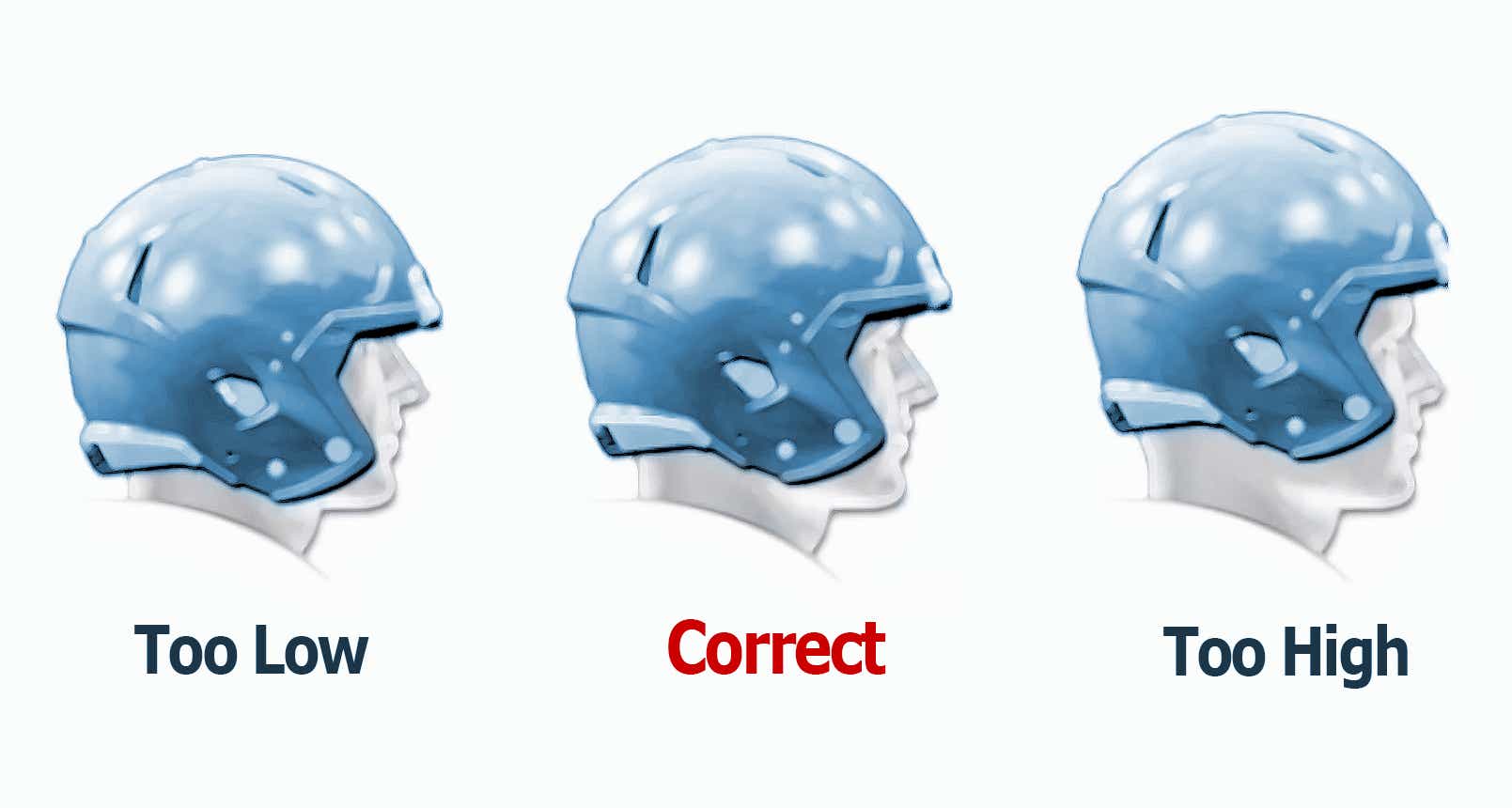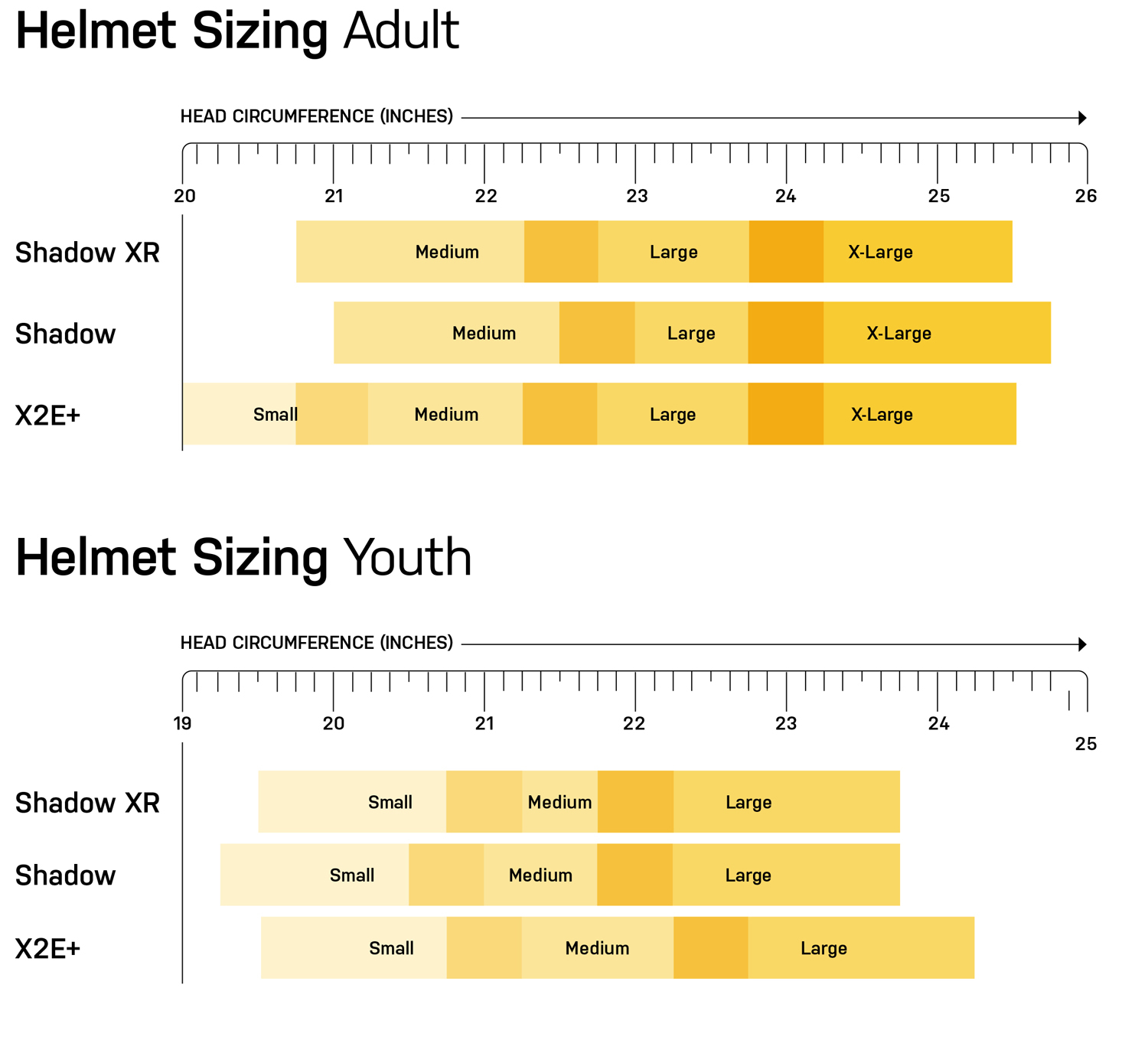To size a football helmet, measure the circumference of the player’s head just above the eyebrows. Match this measurement to the manufacturer’s sizing chart.
Choosing the right football helmet is crucial for safety and performance on the field. A properly fitted helmet protects against head injuries and ensures comfort during play. Start by measuring the player’s head circumference with a flexible tape measure. Make sure to measure just above the eyebrows and ears.
Compare this measurement to the helmet manufacturer’s sizing chart to find the correct size. Trying on the helmet is essential to ensure a snug fit without being too tight. Adjust the chin strap and padding to secure the helmet in place. Regular checks and adjustments help maintain optimal fit and protection.
Importance Of Helmet Fit
A properly fitting football helmet is essential for player safety and performance. Ensuring the right fit can prevent serious injuries and improve game efficiency. This section outlines why helmet fit is crucial.
Safety Benefits
A well-fitting helmet absorbs impact and protects the head. It reduces the risk of concussions and brain injuries. A loose helmet can shift during play, leading to severe accidents.
Proper fit also prevents cuts and bruises on the head. A snug helmet ensures the padding stays in place, offering maximum protection.
Performance Enhancement
A secure helmet boosts player confidence and focus. It allows for better visibility and hearing during the game. Players can move freely without adjusting their helmet.
Proper fit enhances coordination and reaction time. It leads to better on-field performance.
Measuring Head Size
Measuring head size is crucial for finding the perfect football helmet. An ill-fitting helmet can lead to discomfort and even injuries. Follow this guide to measure head size accurately.
Tools Needed
- Soft measuring tape
- Mirror
- Pen and paper
- Helper (optional)
Step-by-step Guide
- Prepare your tools: Gather a soft measuring tape, mirror, pen, and paper.
- Wrap the tape: Place the tape around your head. Start at the forehead, about one inch above your eyebrows.
- Check the fit: Ensure the tape is snug but not tight. It should sit evenly around your head.
- Read the measurement: Look in the mirror or ask a helper to read the measurement.
- Record the size: Write down the measurement in inches or centimeters.
Tips: Measure your head more than once to ensure accuracy. Use the average size if the measurements differ.
Choosing The Right Helmet
Choosing the right football helmet is crucial for safety. The helmet must fit well to protect your head. Understanding the types and materials helps make the right choice. Here’s how to do it.
Types Of Helmets
There are different types of football helmets. Some are better for specific age groups.
- Youth Helmets: Designed for younger players. They offer extra padding.
- Varsity Helmets: Suitable for high school and college players. They provide better protection.
- Professional Helmets: Used by pro athletes. These helmets have advanced features.
Material Considerations
The material of a helmet affects its durability and protection. Choose wisely.
| Material | Features |
|---|---|
| Polycarbonate | Strong and lightweight. Common in varsity and professional helmets. |
| ABS Plastic | More affordable. Often used in youth helmets. |
| Foam Padding | Provides cushioning. Varies in thickness and density. |
Adjusting Helmet Straps
Properly adjusting football helmet straps is crucial for safety. Straps should fit snugly, keeping the helmet in place during play. This section will guide you on how to adjust them correctly.
Correct Strap Placement
Place the helmet on your head. Ensure the front edge is one inch above your eyebrows. The helmet should cover your forehead without obstructing vision. Now, locate the straps.
The chin strap has four attachment points. Two are near your ears, and two are below your chin. Attach the straps to these points. Make sure the chin cup is centered on your chin.
Tightening Techniques
Start with the top straps. Pull them until the helmet feels secure but not too tight. The helmet should not move when you shake your head.
Next, adjust the bottom straps. Tighten them so the chin cup stays firmly in place. The helmet should remain stable during quick movements.
Finally, check the overall fit. The helmet should not shift when you touch it. If it does, re-tighten the straps.
Padding And Comfort
A football helmet’s padding is crucial for both protection and comfort. Proper padding absorbs impacts and fits snugly, preventing movement. This section will guide you on the types of padding and how to customize the fit for optimal comfort.
Types Of Padding
There are different types of padding in football helmets. Each type offers unique benefits:
- Foam Padding: Traditional and cost-effective. Provides basic protection.
- Gel Padding: Molds to the head. Offers better comfort and impact absorption.
- Air Padding: Adjustable and customizable. Ensures a snug fit and superior protection.
Choosing the right padding depends on your needs and preferences. Foam padding is light and affordable. Gel padding offers more comfort. Air padding allows precise adjustments.
Customizing Fit
Customizing the fit of your football helmet is essential for safety and comfort. Follow these steps:
- Check the Initial Fit: Place the helmet on your head. It should feel snug but not tight.
- Adjust the Chin Strap: The strap should be tight enough to hold the helmet in place.
- Inflate Air Padding: If your helmet has air padding, use a pump to adjust the pressure. Ensure the helmet feels secure.
- Recheck the Fit: Move your head side to side and up and down. The helmet should stay in place.
For the best fit, always refer to the manufacturer’s guidelines. A well-fitted helmet protects better and feels more comfortable.
Maintenance Tips
| Task | Frequency |
|---|---|
| Check Padding | Before every game |
| Clean Helmet | Weekly |
| Replace Worn Padding | As needed |
Regular maintenance ensures the helmet stays effective and comfortable. Always replace worn or damaged padding promptly.

Credit: www.nata.org
Testing The Fit
Ensuring a football helmet fits correctly is crucial for safety. Proper fit prevents injuries during play. Here are two key tests: the Shake Test and checking for Pressure Points.
Shake Test
Perform the Shake Test to check the helmet’s stability. Follow these steps:
- Put on the helmet and fasten the chin strap.
- Ask a friend to shake your head gently.
- Notice if the helmet moves independently of your head.
The helmet should stay in place. If it shifts, it’s too loose. Try a smaller size or adjust the padding.
Pressure Points
Check for Pressure Points to ensure comfort. Follow these steps:
- Wear the helmet for 15 minutes.
- Remove the helmet and inspect your head.
- Look for red marks or feel for sore spots.
Pressure points indicate the helmet is too tight. Adjust the padding or try a larger size. Ensure comfort and safety with a proper fit.
Common Fit Issues
Finding the right football helmet size can be tricky. Poorly fitting helmets can lead to discomfort and safety risks. Here are common fit issues players often face and how to address them.
Too Tight
A helmet that is too tight can cause headaches and discomfort. It may even hinder blood circulation.
- Pressure points on the forehead and temples are signs of tightness.
- Red marks on the skin can also indicate a tight fit.
Solution: Loosen the adjustable pads or straps. Choose a larger size if the helmet remains tight.
Too Loose
A loose helmet can shift during play. This reduces protection and stability.
- Shifting side-to-side or up-and-down indicates a loose fit.
- Feeling the helmet wobble means it is too loose.
Solution: Tighten the straps or add thicker pads. Opt for a smaller size if adjustments fail.

Credit: www.academy.com
Maintenance And Care
Proper maintenance and care of your football helmet ensure its longevity and effectiveness. Regular cleaning and proper storage prevent damage and keep the helmet in optimal condition. Follow these tips to maintain your helmet effectively.
Cleaning Tips
Cleaning your football helmet is crucial for hygiene and durability. Follow these steps:
- Use a mild soap and water to clean the outer shell.
- Remove the inner padding before cleaning.
- Wash the padding with mild detergent and let it air dry.
- Avoid using harsh chemicals or abrasive materials.
- Inspect the helmet for any cracks or damage during cleaning.
Regular cleaning helps remove sweat, dirt, and bacteria, keeping the helmet fresh and safe.
Storage Advice
Proper storage of your football helmet can prevent damage and prolong its life. Follow these storage tips:
- Store the helmet in a cool, dry place.
- Avoid direct sunlight and extreme temperatures.
- Use a helmet bag to protect it from dust and debris.
- Ensure the helmet is dry before storing to prevent mold.
- Keep the helmet away from sharp objects to avoid scratches.
Proper storage ensures that your helmet remains in good condition for the next game.

Credit: xenith.com
Frequently Asked Questions
What Size Football Helmet Do I Need?
To find your helmet size, measure your head’s circumference. Use a flexible tape measure around your forehead. Compare this measurement with the helmet brand’s sizing chart.
How Should A Football Helmet Fit?
A properly fitting helmet should feel snug but not tight. It shouldn’t move when you shake your head. Ensure it covers your forehead.
Can I Wear A Helmet That’s Too Big?
Wearing a helmet that’s too big is unsafe. It can shift during play, reducing protection. Always choose the correct size.
How Often Should I Check Helmet Fit?
Check your helmet fit before each season. Head shape and size can change. Regular checks ensure optimal protection.
Conclusion
Choosing the right football helmet size is crucial for safety and performance. Use a tape measure to find your head’s circumference. Ensure the helmet fits snugly without causing discomfort. A properly sized helmet can prevent injuries and improve your game.
Always prioritize comfort and protection when selecting your gear.

